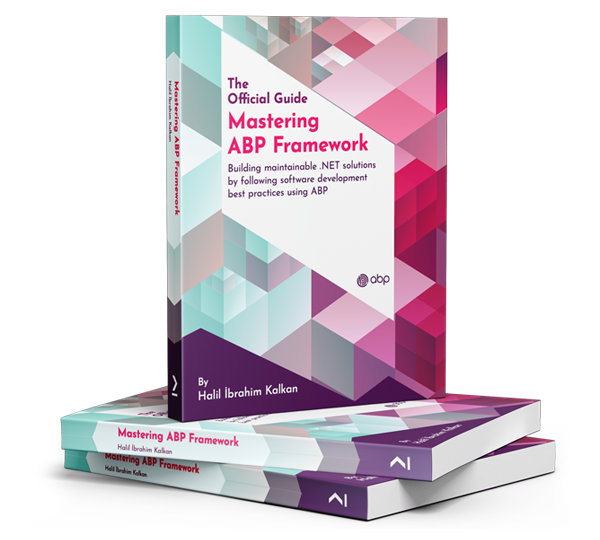- Exception message and full stack trace:
An unhandled exception has occurred while executing the request.
Volo.Abp.Data.AbpDbConcurrencyException: The database operation was expected to affect 1 row(s), but actually affected 0 row(s); data may have been modified or deleted since entities were loaded. See https://go.microsoft.com/fwlink/?LinkId=527962 for information on understanding and handling optimistic concurrency exceptions.
---> Microsoft.EntityFrameworkCore.DbUpdateConcurrencyException: The database operation was expected to affect 1 row(s), but actually affected 0 row(s); data may have been modified or deleted since entities were loaded. See https://go.microsoft.com/fwlink/?LinkId=527962 for information on understanding and handling optimistic concurrency exceptions.
- Steps to reproduce the issue:
Hello Support Team,
We have errors when updating entities and their ConcurrencyStamp.
We have the following environment: We have a list of output channels and a list of output groups. Between these 2 we have an n:m relationship. In a UI, we can add or remove channels to one or more groups. When saving the changes, the API endpoint is addressed for each output group. This means that the endpoint is called twice for 2 groups. A manager is called behind the API method in the AppService, which updates each group. This is where the error occurs. The manager gets the respective output group and processes the request (add or remove channels). Since we are in asynchronous processing here, the ConcurrencyStamp entries of the output channels are updated. Logically, however, these should not be changed as we are changing the output groups.
Example code:
AppService:
public async Task<OutputChannelGroupDto> UpdateOutputChannelGroupAsync(Guid id, OutputChannelGroupUpdateDto input)
{
var updOutputChannelGroup = await _groupsManager.UpdateOutputChannelGroupAsync(id, input);
return ObjectMapper.Map<OutputChannelGroup, OutputChannelGroupDto>(updOutputChannelGroup);
}
Manager:
public async Task<OutputChannelGroup> UpdateOutputChannelGroupAsync(
Guid id,
OutputChannelGroupUpdateDto input,
CancellationToken cancellationToken = default)
{
var outputChannelGroup = await _outputChannelGroupRepository.GetAsync(id, cancellationToken: cancellationToken);
var entityProps = typeof(OutputChannelGroup).GetProperties();
// Some Properties related code (update, create)
await SetOutputChannelsAsync(outputChannelGroup, input.OutputChannelIds);
return await _outputChannelGroupRepository.UpdateAsync(outputChannelGroup,
cancellationToken: cancellationToken);
}
private async Task SetOutputChannelsAsync(OutputChannelGroup outputChannelGroup,
[CanBeNull] List<Guid> outputChannelIds)
{
if (outputChannelIds == null || outputChannelIds.Count == 0)
{
outputChannelGroup.OutputChannels.Clear();
return;
}
var outputChannelsInDb = (await _outputChannelRepository.GetListAsync())
.Where(x => outputChannelIds.Contains(x.Id)).ToList();
if (outputChannelsInDb.Count == 0)
{
return;
}
var existingOutputChannelIds = outputChannelGroup.OutputChannels.Select(oc => oc.Id).ToList();
var toRemove = existingOutputChannelIds.Except(outputChannelIds).ToList();
if (toRemove.Count != 0)
{
outputChannelGroup.OutputChannels.RemoveAll(oc => toRemove.Contains(oc.Id));
}
var toAddIds = outputChannelIds.Except(existingOutputChannelIds).ToList();
if (toAddIds.Count != 0)
{
var newOutputChannelsInDb = outputChannelsInDb.Where(x => toAddIds.Contains(x.Id)).ToList();
foreach (var newOutputChannel in newOutputChannelsInDb)
{
outputChannelGroup.OutputChannels.Add(newOutputChannel);
}
}
}
We did also tests with UOW and the autoSave functions without success. Wehen we update the n:m table directly with the ID's of the Group + Channel it works. But this is not intended.
4 Answer(s)
-
0
Hi,
Could you share a test project with me? I will check it. thanks.
shiwei.liang@volosoft.com
-
0
Hello liangshiwei. I will create a small test solution for you. Please stay tuned.
-
0
ok
-
0
ok
Hello liangshiwei, I have technically found the error or the difference between an ABP Suite generated solution and a solution we've created manually.
In a new test solution, I've created a project with ABP Suite and so the relations were created automatically. I noticed the following:
You handle the fluent links of n:m relations differently than I have in my project (modelbuilder).
You code is like:
builder.Entity<OutputChannel>(b => { b.ToTable(AbpTestEntityRelationsConsts.DbTablePrefix + "OutputChannels", AbpTestEntityRelationsConsts.DbSchema); b.ConfigureByConvention(); b.Property(x => x.DisplayName).HasColumnName(nameof(OutputChannel.DisplayName)); b.Property(x => x.ConnectionString).HasColumnName(nameof(OutputChannel.ConnectionString)); b.Property(x => x.Note).HasColumnName(nameof(OutputChannel.Note)); }); builder.Entity<OutputChannelGroup>(b => { b.ToTable(AbpTestEntityRelationsConsts.DbTablePrefix + "OutputChannelGroups", AbpTestEntityRelationsConsts.DbSchema); b.ConfigureByConvention(); b.Property(x => x.DisplayName).HasColumnName(nameof(OutputChannelGroup.DisplayName)); b.Property(x => x.Icon).HasColumnName(nameof(OutputChannelGroup.Icon)); b.HasMany(x => x.OutputChannels).WithOne().HasForeignKey(x => x.OutputChannelGroupId).IsRequired() .OnDelete(DeleteBehavior.NoAction); }); builder.Entity<OutputChannelGroupOutputChannel>(b => { b.ToTable(AbpTestEntityRelationsConsts.DbTablePrefix + "OutputChannelGroupOutputChannel", AbpTestEntityRelationsConsts.DbSchema); b.ConfigureByConvention(); b.HasKey( x => new { x.OutputChannelGroupId, x.OutputChannelId } ); b.HasOne<OutputChannelGroup>().WithMany(x => x.OutputChannels) .HasForeignKey(x => x.OutputChannelGroupId).IsRequired().OnDelete(DeleteBehavior.Cascade); b.HasOne<OutputChannel>().WithMany().HasForeignKey(x => x.OutputChannelId).IsRequired() .OnDelete(DeleteBehavior.Cascade); b.HasIndex( x => new { x.OutputChannelGroupId, x.OutputChannelId } ); });This will handle the ConcurrentStamp correctly.
Our code is a suggestion from Microsoft (using Many-to-Many with named join table. Source: https://learn.microsoft.com/en-us/ef/core/modeling/relationships/many-to-many#many-to-many-with-named-join-table):
builder.Entity<OutputChannel>(b => { b.ToTable(TransmitDbProperties.DbTablePrefix + nameof(OutputChannel) + "s", TransmitDbProperties.DbSchema); b.ConfigureByConvention(); b.ApplyObjectExtensionMappings(); }); builder.Entity<OutputChannelGroup>(b => { b.ToTable(TransmitDbProperties.DbTablePrefix + nameof(OutputChannelGroup) + "s", TransmitDbProperties.DbSchema); b.ConfigureByConvention(); b.ApplyObjectExtensionMappings(); b.HasMany(d => d.OutputChannels) .WithMany() .UsingEntity(TransmitDbProperties.DbTablePrefix + nameof(OutputChannelGroup) + nameof(OutputChannel), TransmitDbProperties.DbSchema); });Out constellation leads to the error with the update of the ConcurrentStamp beyond the join table. We looked in the MS EF Framework github code and found the affected part in the SaveChanges method. In general, this is no longer a problem of your bundle, but rather one of MS. But if you are still interested in an example, I can provide you with my test project with both variants. But I think that you are happy that the problem has been solved/is not your problem.
Thank you still for the answer and your time.

























































